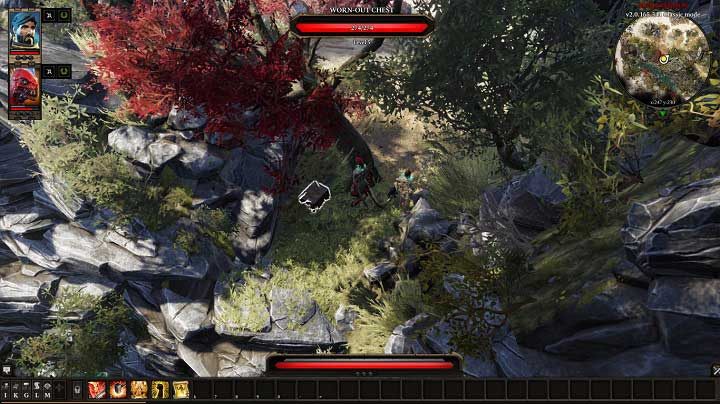Divinity Original Sin 2: Exploration
In Divinity Original Sin 2, you can explore extensive locations alone or with your party. You can view location maps whenever you want, allowing you to cover the whole area and find all points of interest. Our guide lists all useful solutions that can facilitate the exploration of the world or finding interactive objects.
Teleportation (fast travel)
Once you interact with the second shrine, you can teleport between them. In some cases, a simple interaction will do, while sometimes we have to choose a predetermined dialogue option. Finally, a list of unlocked shortcuts will appear that are named in a characteristic way. Once you choose a location, the whole party will be teleported. Such points are marked on the map with a characteristic icon, and when we approach them, we'll see an inscription above our hero, which will inform us that we are near one of such spots.
Locating
The game is seen from an isometric perspective, sometimes forcing us to rotate the camera to a different perspective so there are no tidbits that have escaped our attention. During the exploration, you should often press left "ALT", which will facilitate finding any equipment elements lying on the ground. We may have a huge convenience in this matter, but we won't find a button that helps us discover chests, the location of buried treasure, or hidden passageways.
As I mentioned, you should rotate the camera often, as it is the only way to discover everything. Additionally, watch the other party members, who sometimes can inform you about a treasure, or a secret passage nearby. Most objects will be visible only after pointing to them with a cursor, so don't forget to investigate your surroundings in such a way, especially nearby walls and rocks. As it often happens, the secret passages are only visible when a neutral character marks them on our map. You should always carry a shovel, which will allow you to move a heap of earth that hides a chest or other treasure.
Neutralizing Threats
You'll often come across a situation where a dangerous situation is created by natural elements. These occurrences are divided into two categories: ones that you can use, and ones that can only be a nuisance. Using the elemental powers can have special results during combat - this subject is described in detail in the section on combat.
In case of obstacles, the situation is somewhat different. Using the information from the character statistics, we can learn that the game has five elements: water, air, earth, fire, and poison. All dangers connected to them (aside from combat) are seen as blocked passages. You have to know that in order to get rid of a hazard, you need to use the power of its opposing element. The walls of fire can be doused by water tanks that are often found in the game, while the poisoned areas have to be burned.
Investigating Objects

If a found object doesn't include any other restrictions (e.g. an ordinary barrel), you only have to perform a simple interaction on it, in form of pressing LMB.
If once you marked an item or an object, a padlock appears, you have to make an interaction using the contextual menu. Depending on the object type, you may need a key, a simple picklock will do, or you can use strength. Each object has its own durability, and if you cannot open it, you can just destroy it. This process is a bit time-consuming, but it shouldn't pose any problems. The most comfortable solution is choosing a character with the highest strength attribute, pressing the right "ALT" button, and choosing the interaction area using LMB. It is worth mentioning that such action highly affects the durability of the currently equipped weapon, so you should choose an item that isn't very valuable for you.
The objects in the game are marked in two different ways. If the cursor (hand, arrow, or chest) is golden, the item is neutral. If we take it to our inventory, other people will act indifferent. It should be mentioned that the chests and bodies that are yet uninvestigated change the mouse cursor into a golden chest. Once you investigate and loot the chest, the cursor changes its shape again, but this time the chest is silver.
If the cursor becomes red, it means that our interaction may have some consequences. Stealing a low-value item or a singular case of theft can lower the relations between the owner and the culprit. If you will steal items regularly, you'll very quickly have to face either the owner, or the guards.
You are not permitted to copy any image, text or info from this page. This site is not associated with and/or endorsed by the developers and the publishers. All logos and images are copyrighted by their respective owners.
Copyright © 2000 - 2025 Webedia Polska SA for gamepressure.com, unofficial game guides, walkthroughs, secrets, game tips, maps & strategies for top games.
